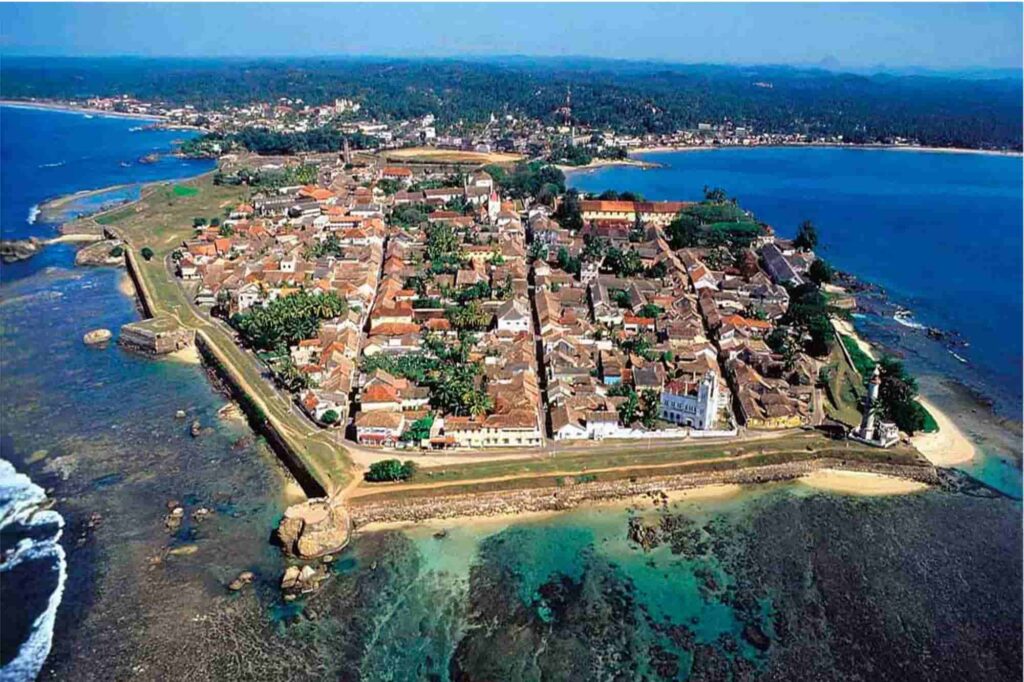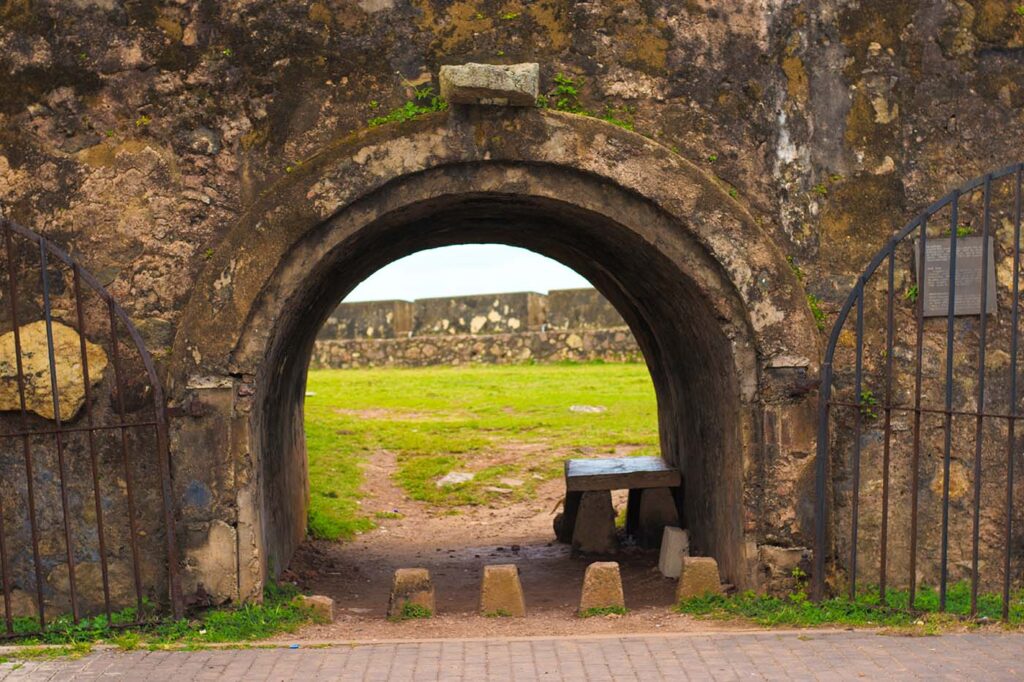


History of Galle Dutch Fort
The Galle Dutch Fort is a seventeenth-century colonial fort in Sri Lanka. It stands on a rocky promontory facing the Indian Ocean. Rocky shores and an imposing landside rampart defend it in all four directions. It was the Portuguese who chose Galle as a permanent trading post in 1588. Following the siege of Galle (1640), the Dutch ousted them from Southern Sri Lanka. Then the Dutch extensively fortified the fort until 1729. Its present form was mainly conceived under Dutch company rule hence the name Galle Dutch Fort. In its heyday, the fortification also served as the island’s southern commandment of the Dutch East India Trading Company (VOC). Its sister cities were Colombo, Trincomalee, and Jaffna.
The fort defended the main VOC trading port in Sri Lanka. In 1796, it was peacefully handed over to the British who maintained a military presence until 1948. Many of Galle Fort’s European inhabitants left it, following the 1972 constitution, which completed the transitional phase of Sri Lanka into a republic. Thereon, the structure became dilapidated until renovations started after the 2004 tsunami followed by the end of the war in 2009. Today, preservationists maintain the Galle Dutch Fort as the most well-preserved colonial fort in South Asia. Most of its main features are miraculously preserved. A rare Portuguese fortalice and thirteen Dutch bastions dot the original ramparts, each with a different story belonging to a different time.
Its exotic blend of European and Asian architecture attracts many local and foreign visitors. Artists, photographers, writers, and architects own many restored colonial buildings inside the fort. Trendy cafes, boutique shops, and hotels add a unique character to the atmosphere of the fort’s colonial streets. However, the real energy of Galle Fort comes from its active colonial court complexes, government offices, public schools, trading companies, and beautiful churches, harking back to a thriving European colony.
Now then, let us get into the fort’s main attractions!
The Trail of Bastions
The wide ramparts dotted with regular bastions make an interesting three-mile trail that circles the Galle fort. Three-quarters of these ramparts face the Indian Ocean and offer spectacular views. Three landside bastions named Star, Moon, and Sun are the most imposing structures in the fort. These three gun points defend at two levels (a lower one for short-range cannons and a higher one for long-range cannons). The vanguard center point is the moon bastion (sometimes referred to as Mark). It is the largest of the three. It defended the landward side with 19 cannons. A Victorian-era clock tower (A later addition) dominates the higher level of the Moon bastion. This famous clock tower is more than 130 years old.
Following this trail will lead to bastions Fishmark, Commandment, Black fort (Zwart), Akersloot, Aurora, Point Utrecht, Flagrock, Triton, Neptune, Clippenberg, Aeolus, and Star, in order. The black fort is actually a Portuguese fortalice. It is the oldest structure inside the fort. A British-era gateway passes under the rampart between the Moon and Sun bastions. This is the Main Gate (1873) built by the British to ease the traffic to the fort from the Old Dutch gate (1668). Upon entering through the main gate, one finds a small roundabout leading to three throughways dividing the fortress’ well-aligned streets. The left throughway leads to a string of interesting colonial buildings.
The Dutch Reformed Church – Groote Kerk
The Dutch Reformed Church (1755) stands 12 meters above sea level (highest point inside Galle fort). The church design is in the form of a Greek cross. It shows Doric architectural features similar to the Wolvendaal Church (1749) in Colombo. However, the interior has undergone many changes during the British era, with a stained glass window, a side canopy, altar, communion rails and a 1760 organ.
All Saints’ Church, Galle
The All Saints’ Church in Galle Fort is a British era Anglican Church built-in 1871. It shows Victorian Gothic Revival architecture with a basilica plan, which suits the climate of Galle. Architect J.G. Smithers designed the church. The location was a gallows in the early years of Dutch rule. The laterite rock (Kabok) arches are interesting local blend to its construction.
National Maritime Museum – The Galle Dutch Warehouse and the Old Gate
The highlight of the National Maritime Museum is its building, which is the seventeenth-century Dutch warehouse. It is a long warehouse, built into the ramparts facing the old port of Galle. The structure has thick walls and solid pillars, which can withstand direct cannon fire. The interior shows some artifacts belonging to Sri Lankan maritime history. The old gate runs through the warehouse. This was the original entrance to the fort of Galle. Both Dutch and British coat of arms can be seen above the entrance. The Dutch coat of arms hovers on the inner side whilst the British coat of arms faces the port side.
Galle Lighthouse on Point Utrecht Bastion and Lighthouse Beach
The Galle lighthouse (1939) is at the point Utrecht bastion. The onshore lighthouse is 92 feet high. The Lighthouse beach is right by the lighthouse. In the Victorian era, it was a ladies-only beach. A beautiful shaded courtyard borders the lighthouse beach until Old Dutch hospital shopping complex.
Flag Rock Bastion
The flag rock bastion served as the signal station for Galle port ships traffic. It is a bastion built on a natural boulder at the southernmost point of fort’s shoreline. The popular cliff jumpers risk their lives by hauling themselves from the flag rock down to the rocky waters below. An old wooden lighthouse stood here until a fire burned it down in 1930.
More sightseeing in Galle
